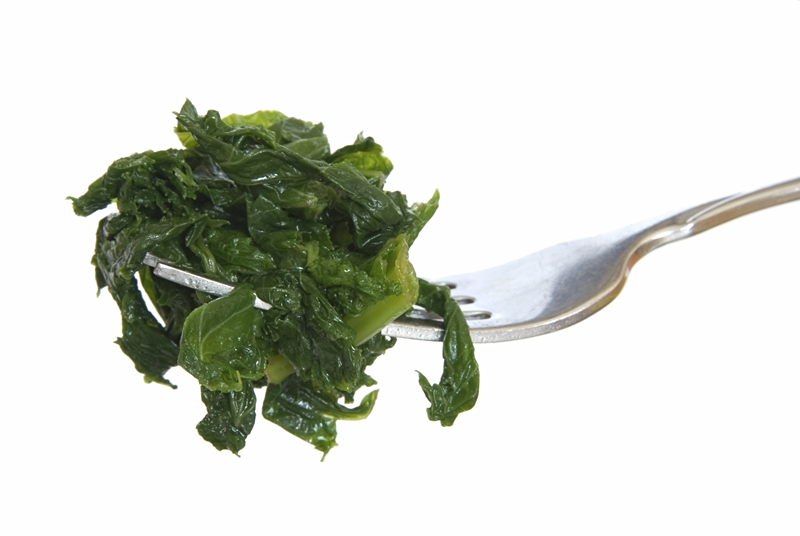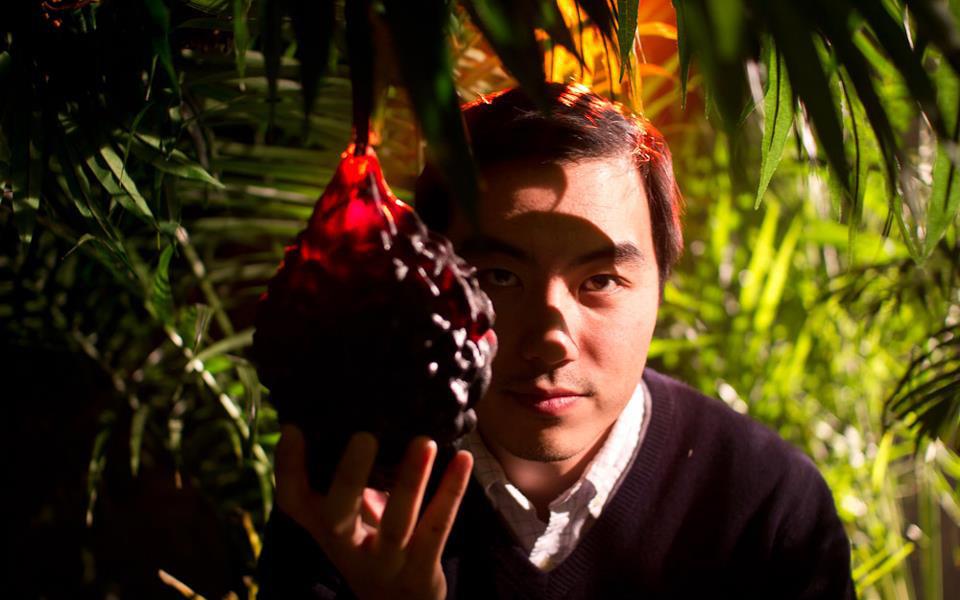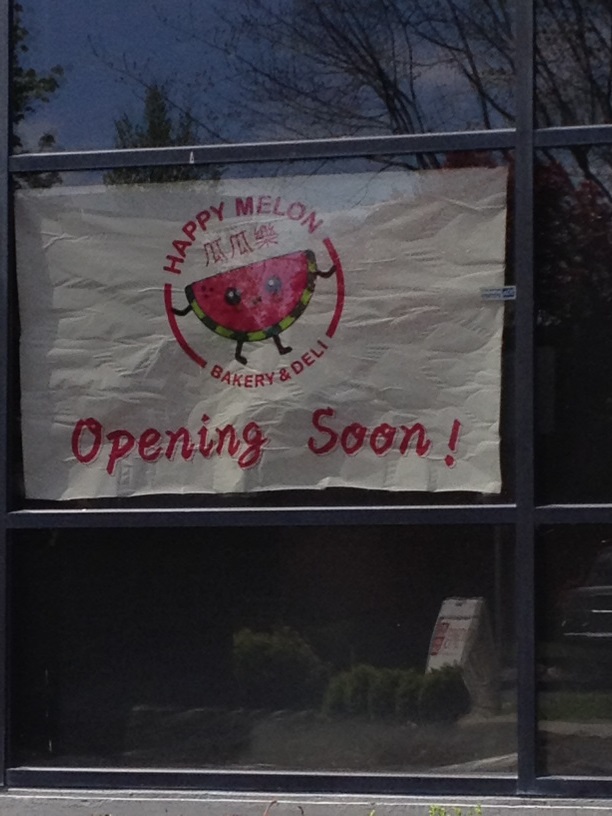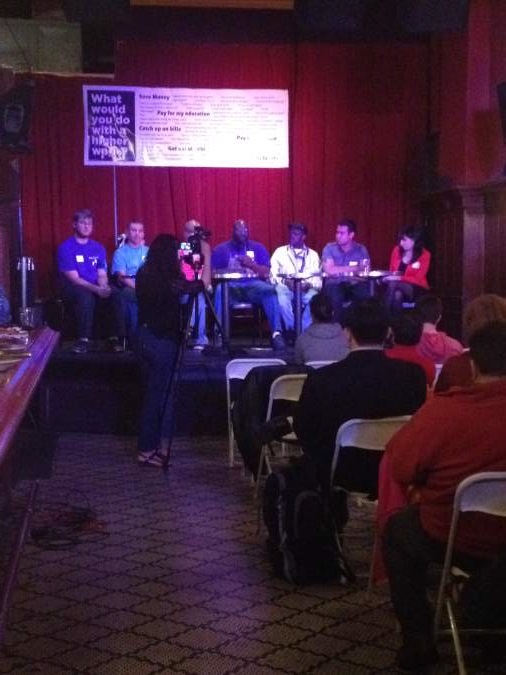The descendantsof a traditional African-American cuisine are saying “No, thanks” to their forerunners’ culinary legacy.
When asked why soul-food restaurants haven’t thrived in Seattle, a staffer at Uncle Thurm’s Finger Lickin’ Chicken and Ribs in Tacoma says, “That’s a good question. Everyone in Seattle comes here.”
Uncle Thurm’s sells 200 pounds of chitterlings every week. Another Tacoma soul-food restaurant, Southern Kitchen, does a brisk lunch business in corncakes, baked chicken, and strawberry lemonade capped with whipped cream. But their minor successes haven’t signaled a soul-food renaissance in the region at large: Mirroring the situation nationwide, soul-food restaurants in Puget Sound are struggling.
“It’s a mixed bag for Seattle,” says Northwest African American Museum deputy director Brian Carter, who cites Catfish Corner as the city’s best extant example of soul food.
“There were joints here and they’re gone,” says African-American foodways scholar Adrian Miller, who’s writing a book about soul food for University of North Carolina Press.
Soul food’s popularity has waned in the face of increased concern about fatty foods and decreased interest in the identity politics associated with the cuisine. Dwindling African-American populations in urban centers and the weak economy haven’t helped soul food’s chances either. But what’s really killing soul food is the reluctance of restaurateurs’ offspring to take over their family businesses, Miller says. “The kids aren’t interested,” he explains. “They want to do something else.”
As part of his research, Miller, who hails from Denver, is eating at soul-food restaurants across the country. While he was in town a few weeks ago, I joined him at Thurm’s and Southern Kitchen, his 92nd and 93rd stops. We ate catfish, ribs, okra, black-eyed peas, macaroni and cheese, collards, and candied yams, few of which merited a tiny scribbled star in the small black journal Miller uses to record memory-jogging notes.
Miller defines soul food as a “limited repertoire of traditional African-American foods eaten outside the South.” In essence, it’s an immigrant’s remembered and cherished cuisine, in which the Deep South functions as the old country. Although many soul-food staples are still served in the South, the soul-food versions tend to be “sweeter, spicier, and fattier.”
For Miller, soul food also has a strong celebratory component. The mainstays of a soul-food buffet are the festive foods which would have traditionally appeared on a holiday table. The emphasis on celebration also explains the omnipresence of red drink—Kool-Aid, Faygo Red Pop, Big Red, or strawberry lemonade, depending on the region—at soul-food joints. The sugary beverages recall the red teas served in Africa, although, Miller says, “There is a generational shift. The young’uns like grape.”
Still, Miller concedes there’s no standard definition of soul food. “A lot of people are really confused about it,” says Miller, who often asks soul-food restaurant staffers how they distinguish between Southern and soul food. He rarely gets the same answer.
The answers are further complicated by soul food’s continuing evolution. While the influx of African immigrants over the past decade hasn’t much changed the soul-food scene—Miller says widespread mutual resentment between new immigrants and descendants of enslaved Africans has largely prevented culinary commingling—economics and religious practices have strongly influenced contemporary soul-food menus.
“Catfish is disappearing,” says Miller. “It’s too expensive. It seems like whiting is now the most popular fish.” And in deference to Black Muslim dietary codes, many soul-food restaurants are now proudly pork-free. Collards are commonly cooked with turkey, although Southern Kitchen uses beef.
Other soul-food restaurants don’t use any meat, having discovered their leafy greens and grains appeal to a clientele who aren’t necessarily nostalgic or committed to Black Power principles. They’re drawn to the cuisine’s agrarian heritage, or have perhaps noticed that “When you look at the list of foods for fighting cancer, a lot of them are soul food,” says Miller. “The surprising thing is how strong vegan soul food is coming on. That’s where the energy is now.”
Makini Howell is chef/owner of Plum Bistro, a vegan restaurant in Capitol Hill specializing in Northwest regional cuisine. She’s heard about operations like Mac’n, a vegan soul-food truck in Miami, and Souley Vegan in Oakland, but has no plans to replicate their niche here. “It’s already limited,” Howell says of her restaurant’s vegan status. “And then soul food is more limiting. It’s sort of like being a minority female business owner of color: It’s categorizing.”
While Howell sometimes serves dishes with soul-food corollaries, she doesn’t think the cultural overlap is significant in an era when McDonald’s offers chipotle ketchup. “We have collards, but that doesn’t mean it’s a soul-food place,” says Howell, who resents the presumption that black chefs should work in a soul-food idiom.
And Howell notes that her customers aren’t clamoring for soul food, a term she hesitates to use since its definition isn’t settled. She suspects soul food isn’t “current,” and questions its appeal to eaters who don’t associate the cuisine with their grandmas’ kitchens.
“When it’s packed, I’m the only black person here,” Howell says. “I had 15 friends for dinner, and it was the most black people I’ve ever had in my restaurant.”








